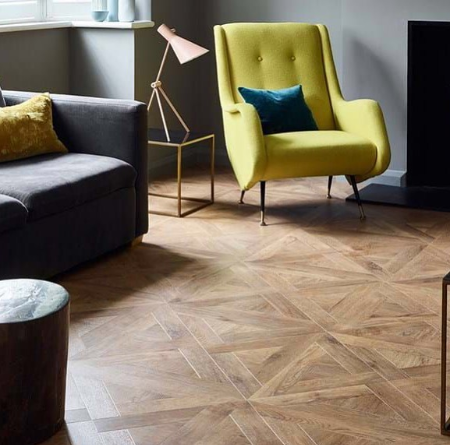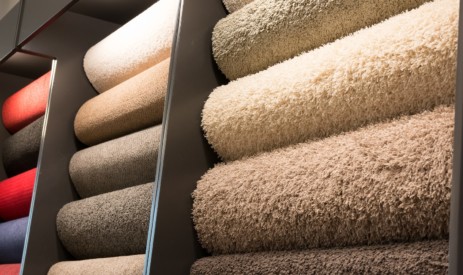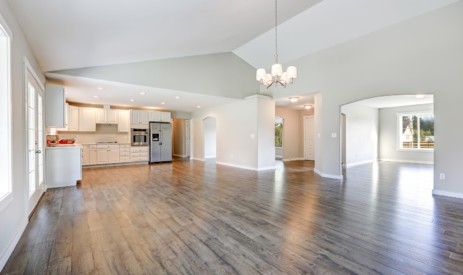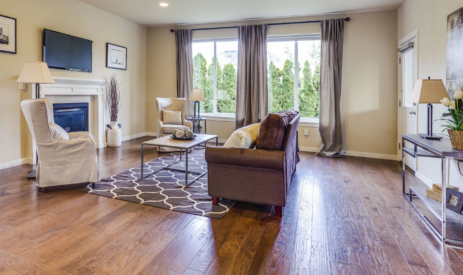What Is Amtico Flooring?
eHeard of Amtico flooring but not sure what it is, and how it compares to laminates, tiling, engineered wood and stone flooring? Here we take a look at the product and fill in the blanks.
Amtico is a brand name
First up, we need to make the distinction clear – Amtico is the name of the company. Its most famous product (vinyl tiles) has become synonymous with the brand, but Amtico also makes commercial grade carpets. The business was founded in 1964 in Coventry, but it can trace its history back to the 1700s, under the name Courtaulds. Amtico is pronounced Am-teek-oh.
Its commercial and domestic arms are both large – many major shops, offices and other businesses use their flooring products, but it has also become very popular as a manufacturer of domestic flooring tiles that imitate wood, tile and stone, as well as abstract designs. We’ll be dealing with the domestic floor tiles here, and we’ll be using the word “Amtico” generically to describe the tiles.
How much Amtico flooring costs
Amtico flooring can cost anything from £20-£90 per square meter and then around £15 per square meter to install if your floor has already been levelled, and double that if it hasn’t. The price you pay will depend on the quality and design you go for.

Any shape of tile can be made (but you often don’t have to)
Because Amtico is made of soft, pliable vinyl, it can be cut relatively easily with a good utility knife. That means you can cut the tiles to whatever shape you want, and make intricate patterns in the flooring. It’s also very easy to edge around curves, uneven surfaces and door frames with the smallest gap.
One of the signatures of an Amtico floor, however, is the fact that really expressive patterns can be put down. You can lay parquet-style floors with gorgeous geometric borders and a marquetry centrepiece, using several different types of “wood” to complete the effect. And if you’re aiming for that classic Victorian floor in all its geometric splendour, you can achieve a very convincing finish with Amtico’s small coloured squares and triangles.
With Amtico, you don’t always have to go to the trouble of designing, marking, cutting and laying your tiles. The company manufactures a wide range of motifs, edging, strips and borders to give your flooring those finishing touches.
Advantages of Amtico
- Amtico is waterproof, so you don’t have to worry about spillages.
- It’s also fine to be used in bathrooms and kitchens, as long as it’s well sealed.
- There is no limit to the possible designs and styles you can use.
- Dozens of materials and colours are covered in the Amtico range:
- all kinds of imitation stone;
- different imitation woods in various colours;
- porcelain floor tiles, in from glossy black and white to terracotta;
- plain colours;
- abstract patterns.
- Amtico has a “Click Smart” range that doesn’t need adhesive.
Drawbacks
- Most of the tiles don’t interlock and they’re not nailed or screwed down – they have to be glued down with a special adhesive. This isn’t a drawback in itself, but if you change your mind about any element of your floor, it’s quite a big job to change.
- The adhesive needs 10 minutes to go tacky before the tiles will stick, so it can make installation slow – you have to do the room bit by bit.
- Although the tiles are waterproof, the adhesive underneath will not withstand being wet for long periods, as it loses its stickiness.
- Floors need to be flat and smooth, and concrete floors will need a damp-proof membrane applying.
- From head height, tiles are faithful reproductions of the ceramic, wood or stone that they are imitating, but on very close inspection the differences are clear.
How Amtico compares with other flooring materials
Amtico v Karndean
Karndean is very similar to Amtico – they are both aimed at the upper end of the vinyl flooring market, and are both created and used in similar ways. Being a different company, Karndean has its own unique range, although the same themes – wood, stone, tile, concrete, and abstract – are covered. Karndean has a loose lay collection, which requires no adhesive, but doesn’t click into place, like Amtico Click Smart.
Amtico v laminate
Amtico and laminate are both entirely man-made materials. The main difference is that Amtico needs to be stuck down to a hard, flat surface with adhesive, whereas laminate sits on top of a soft underlay, and is a little more forgiving of uneven floors. Laminate is more rigid, and clicks into place, while Amtico is soft and needs to be perfectly flush to leave no gaps. Intricate patterns and motifs would be impossible with laminate, but Amtico laps them up. Amtico copes better with high heels and furniture, too.
Amtico v tiling
Tiling is the real deal, and has been a popular choice for millennia. Amtico is obviously made of a different material, but thanks to rounded-edge tiles, can look very similar. It’s not as cool underfoot as tiling, and won’t shatter if you drop something heavy and hard on it.
Amtico v lino
Lino is an inferior product, used when cost is the main driver. In its favour, it comes on a large roll like a carpet, so can be cut to size, but it wears out quicker and doesn’t generally have the attention to detail that Amtico has.
Amtico v natural wood
With natural wood, every plank is unique, and it comes with flaws, imperfections and texture that give it that unmistakable authenticity. It’s also expensive, and needs regular maintenance, particularly with spillages – you probably wouldn’t want a natural wood bathroom floor.
https://www.instagram.com/explore/tags/amtico/?hl=en
Amtico v engineered wood
Engineered wood is like laminate, but it is a thin layer of real wood backed with stiffening layers then finished with a protective coating. Amtico isn’t real wood – it just pretends to be. Amtico doesn’t need as much care as engineered wood, especially when it comes to spillages, as the latter will stain if not cleared immediately.
Amtico v stone
The biggest difference here is price – stone is very expensive to source, work and lay, although its lifespan is practically limitless. Amtico is warmer underfoot, however, which is important if you’re the barefoot type.
A real alternative
Amtico is positioned somewhere around engineered wood and tiling in price terms, but it’s a quality product that comes with plenty of benefits, so is definitely one to consider.
Related articles
Copyright © 2000-2025 Rightmove Group Limited. All rights reserved. Rightmove prohibits the scraping of its content. You can find further details here.


